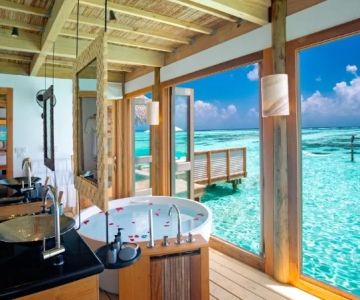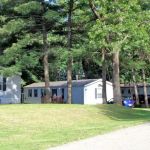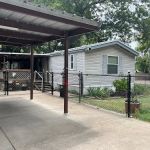Why a US Cabin Works for Writers
Silence you can measure
When you’re figuring out how to plan a writing retreat in a US cabin, remember the core benefit: controllable quiet. A freestanding space removes hallway chatter, lobby music, and café clatter, so every hour spent at the desk actually moves your draft forward.
Nature as an editing partner
Trees, water, and long horizons give the brain recovery time between bursts. Many writers report they solve plot knots on short walks, not while staring at a cursor.
Choose Your Region and Season
Mountains for deep focus
Smokies, Adirondacks, or the Cascades offer cool air and long, quiet evenings. Great for dense edits and research-heavy chapters.
Lakes and coasts for pace and reward
Great Lakes, Maine’s mid-coast, or Northern California’s redwood rivers are ideal when you need a “write hard / reward hard” rhythm—morning sprints followed by chilly dips or beach walks.
Desert clarity
High desert cabins in New Mexico or Arizona offer pitch-black nights and starry resets. Minimalist landscapes reduce distraction and encourage big-picture planning.
Set Goals, Scope, and Budget
Define the finish line
Write a single sentence: “By day X, I will complete Y.” Examples: 12,000 new words, a query-ready essay, or a revised act of a screenplay. Concrete goals make a cabin stay measurable.
Right-size the retreat
Three days = momentum; five days = draft progress; seven to ten days = structural overhaul. Build a budget line for food delivery or simple groceries so you don’t trade writing time for errands.
Find the Right Cabin and Amenities
Workspace that behaves
Look for a full-size table, an ergonomic chair, real lamps, and blackout shades. If Wi-Fi is spotty, download research in advance and plan offline blocks.
Heat, light, and sound
Reliable HVAC, ample natural light, and the ability to shut off ambient noise matter more than a hot tub. Ask the host about neighboring construction and road noise.
Location sweet spot
Close enough to a small town for groceries, far enough for silence. A 15–25 minute drive usually hits the mark.
Design a Daily Rhythm that Produces Pages
Block your day in thirds
Morning deep work (no internet), afternoon admin/research, evening light revision. Protect mornings like a deadline day.
Use sprint structures
Try 50/10 cycles: 50 minutes writing, 10 minutes movement. Stack four cycles before lunch for 1,500–2,000 words without burnout.
Rituals that signal “go”
Same mug, same playlist, same seat. Tiny rituals cue the brain to enter flow on demand—an essential habit for any cabin writing retreat.
Solo vs. Group Retreats
Solo: the monastic sprint
Maximum control and zero negotiation. Best for finishing drafts or intense revision passes.
Group: accountability and feedback
Two to four writers can share costs and critique pages at set times. Establish quiet hours and device rules on day one to prevent social creep.
Packing Smart for Creative Focus
Tools, not toys
Laptop, backup drive, long charger, legal pads, highlighters, sticky notes, and noise-dampening headphones. Bring a travel keyboard if your wrists are sensitive.
Energy and comfort
Simple meal kits, electrolyte packets, a warm layer for dawn sessions, and a compact lumbar cushion. Comfort compounds output.
Sample 3-Day and 5-Day Itineraries
Three days (momentum build)
Day 1: arrival, outline refresh, two writing sprints; Day 2: four sprints, afternoon hike, evening polish; Day 3: two sprints, compile and back up, exit by noon.
Five days (draft progress)
Days 1–2: heavy generation; Day 3: half-day rest and long read-through; Days 4–5: targeted rewrites and final backup. Keep evenings tech-light.
Real Traveler Stories
Naomi’s deadline miracle
Facing a grant deadline, Naomi booked a lake cabin in Minnesota. She set 1,800-word morning targets and promised herself a paddle only after hitting them. By day four, she had a polished draft—and a newfound affection for loons at sunrise.
Daniel’s group pact
Three screenwriters split a Blue Ridge cabin. They taped scene cards to a wall, cooked one-pan dinners, and ran evening table reads. Page counts jumped because their rules were simple: phones off till 2 p.m., feedback before dessert.
Logistics, Safety, and Accessibility
Access in all weather
Confirm road conditions, parking, snow removal policies, and cell coverage. Share your itinerary with a friend and set daily check-in texts.
Health and ergonomics
Stretch every 90 minutes. If you’re prone to wrist pain, pack a portable stand and external keyboard. Keep water within reach; dehydration wrecks focus.
Respect the land
Follow Leave No Trace principles and local fire rules. Quiet, clean workspaces are easier to return to the next morning—and kinder to hosts.
Refined Travel Concierge
Curated cabins for writers
Finding the right place is half the draft. With Refined Travel [ ], you can request quiet-rated cabins with real desks, blackout shades, and hiking access within 10 minutes—plus flexible check-in for late-night arrivals.
Your next step
If How to Plan a Writing Retreat in a US Cabin sparked ideas, choose your dates and word goal today. Refined Travel can shortlist properties, estimate seasonal pricing, and arrange grocery drop-off—so you arrive, exhale, and write.







 Oak Creek Estates3.0 (74 reviews)
Oak Creek Estates3.0 (74 reviews) Catfish Place Campgrounds4.0 (19 reviews)
Catfish Place Campgrounds4.0 (19 reviews) Red's Mobile Home Court4.0 (18 reviews)
Red's Mobile Home Court4.0 (18 reviews) Darlington Mobile Home Village3.0 (54 reviews)
Darlington Mobile Home Village3.0 (54 reviews) Eldorado Village3.0 (110 reviews)
Eldorado Village3.0 (110 reviews) Pecan Acres MH & RV Community3.0 (61 reviews)
Pecan Acres MH & RV Community3.0 (61 reviews) Exclusive Travel Packages for First-Class Travelers: A Guide to Luxury Vacations
Exclusive Travel Packages for First-Class Travelers: A Guide to Luxury Vacations Refined Travel Experiences in Southeast Asia: Explore Luxury & Unique Destinations
Refined Travel Experiences in Southeast Asia: Explore Luxury & Unique Destinations How to Make the Most of Luxury Vacation Deals: Expert Tips for Savvy Travelers
How to Make the Most of Luxury Vacation Deals: Expert Tips for Savvy Travelers How to Enjoy a Refined Travel Experience in the Mountains
How to Enjoy a Refined Travel Experience in the Mountains Refined Travel Itineraries for Art and Culture Lovers: Explore the World of Art and History
Refined Travel Itineraries for Art and Culture Lovers: Explore the World of Art and History Most Luxurious Destinations for Honeymooners: Top Spots for Romance and Luxury
Most Luxurious Destinations for Honeymooners: Top Spots for Romance and Luxury